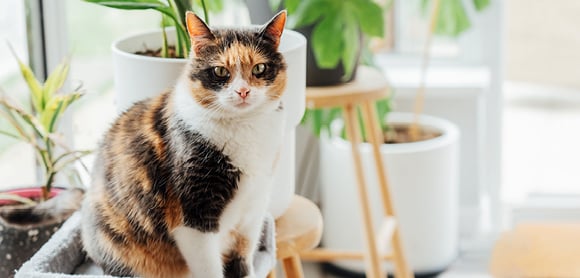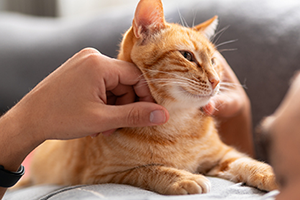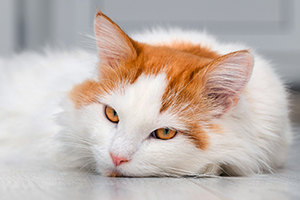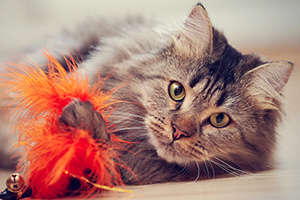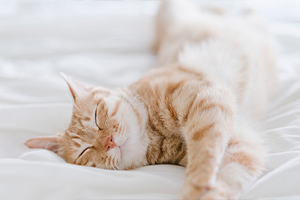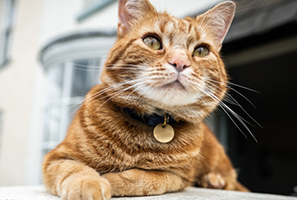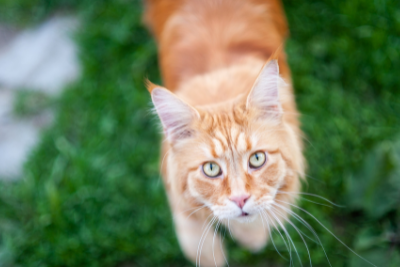Moving house with cats: 6 essential tips

Quick Links
1. Plan ahead for moving with cats
Set up a quiet room for your cat in your current house, around a week before the big move. Fill it with her things: bed, toys, litter tray, food and water, and gradually introduce her to this safe space. When moving day arrives, leave your cat in here undisturbed, with the doors and windows closed. Feed her at least three hours before moving her to the new house in her travel basket, so she doesn’t get travel sick. Alternatively, you could book her into a cattery for a few days during the move, to avoid all the fuss.
Either way, make sure her vaccinations and microchip details are up to date as you move to your new territory (and don’t forget to register with a new vet when you get there).
2. Establish another safe room
Patience is key to grooming your dog at home. Choose a time when your dog is relaxed and sitting comfortably, and just do a little bit at a time if they’re inclined to fidget.
For brushing legs and feet, it’s best to teach your dog to stand, says Pamela Campbell of Ayrshire Grooming Salon and Grooming School, the only National Pet College training school in Scotland. ‘Hair in these areas tangles easily if your dog has been walked in long grass, or rubbed dry with a towel.’
3. Use scents to soothe your cat
To help your cat feel more at home, try a pheromone scent. Sprays, diffusers or plug-in devices create a reassuring environment that can help to reduce cat stress.
Unlike humans, cats rely more heavily on scent than they do on visual memory. You could try gently wiping around the lower part of your cat’s face with a cloth to pick up her own scent, then rubbing this on the bottoms of doors and other surfaces at cat height.
4. Settle your cat in slowly
5. Create a calm yet stimulating environment
Establish a routine with your cat in the first few weeks after moving, so she feels less stressed. Feed her small, regular meals and spend plenty of time with her. Try to avoid doing anything that might rattle her, like decorating or building work.
Make your new home as cat-friendly as possible, provide perching areas where she can sit up high and look down, and create hiding places that she can retreat to. Provide indoor entertainment so she can burn off energy and keep her brain active. A puzzle feeder will make her work for her food, for example.
6. Allow time to settle: how long to keep your cat indoors after moving?
After moving house with a cat, keep her indoors for at least three weeks to give her time to settle. When you do let her outside, do so just before her dinnertime, which will entice her to come back again. Step outside first, and encourage her to go with you. But don’t carry her out – let her make her own way. And leave the door open, so she can run back inside at any point.
Ensure she has hiding places close to the house, preferably near her cat flap – use pots, plants and garden furniture that she can retreat behind if she feels threatened. Let her out for short periods at first, building up to longer stretches, until you’re happy that she feels secure and confident on her new home turf.
Petplan is a trading name of Pet Plan Limited (Registered in England No. 1282939) and Allianz Insurance plc (Registered in England No. 84638), Registered office: 57 Ladymead, Guildford, Surrey GU1 1DB.
Pet Plan Limited is authorised and regulated by the Financial Conduct Authority. Financial Services Register No. 311969. Allianz Insurance plc is authorised by the Prudential Regulation Authority and regulated by the Financial Conduct Authority and the Prudential Regulation Authority. Financial Services Register No. 121849. Pet Plan Limited is a subsidiary of Allianz Insurance plc.

